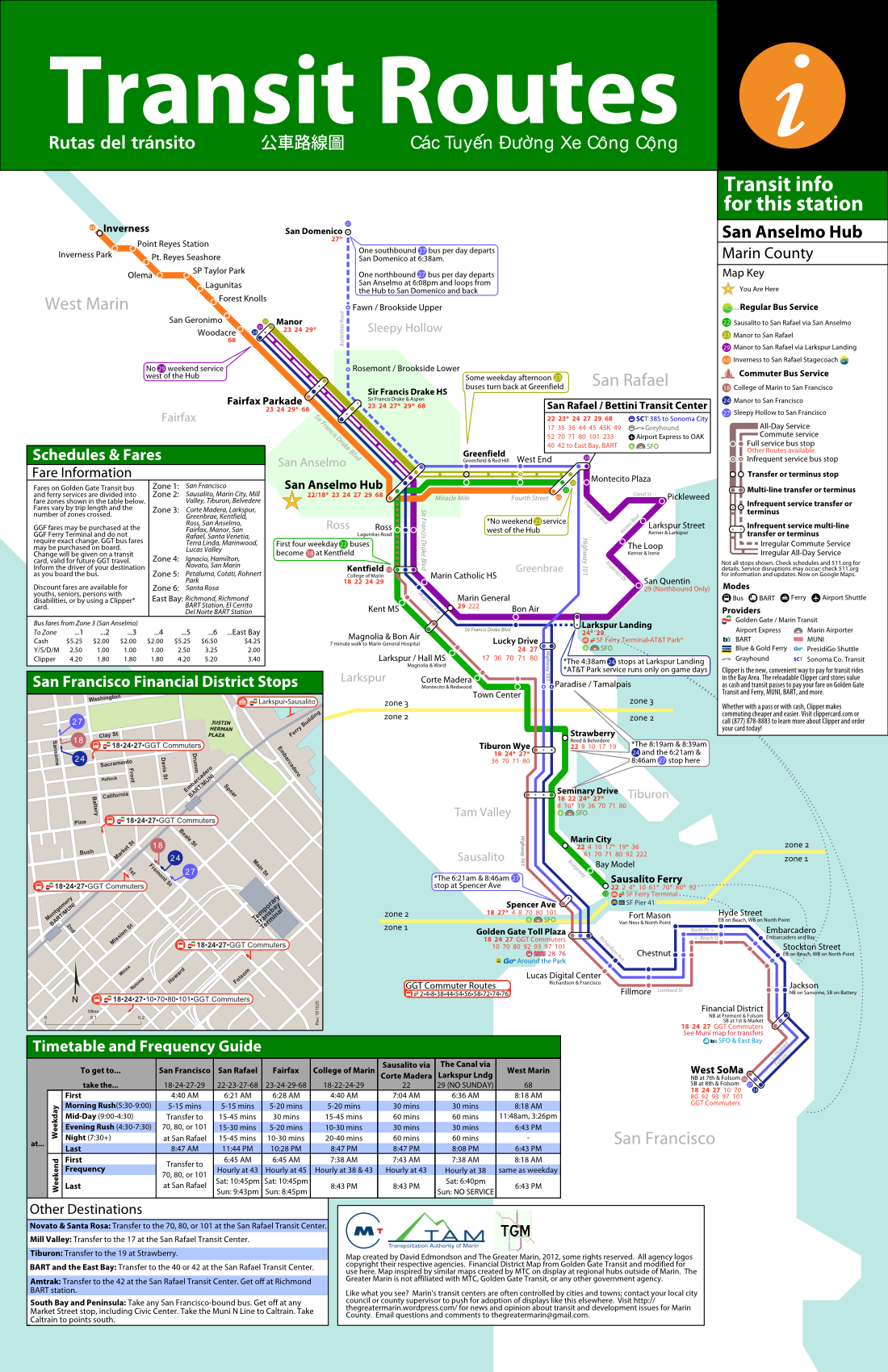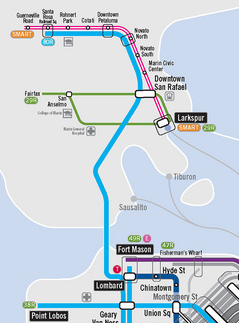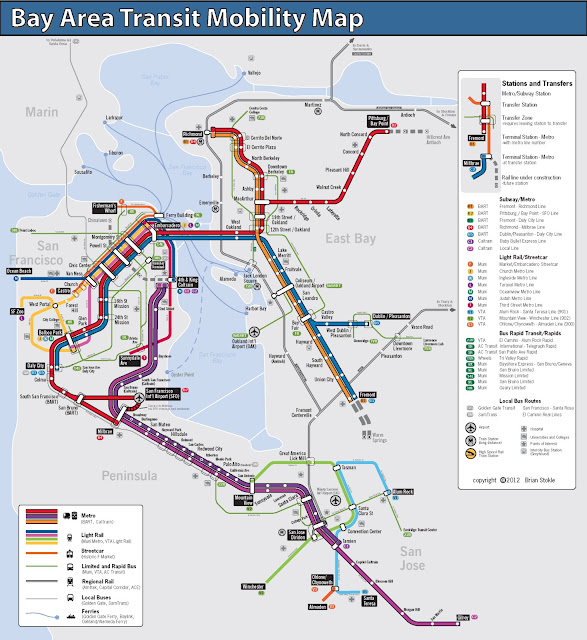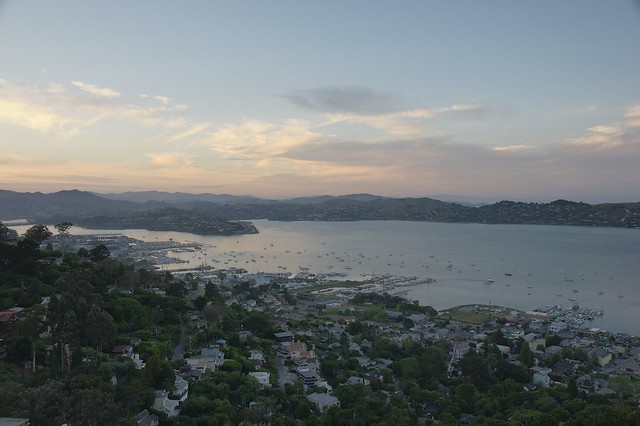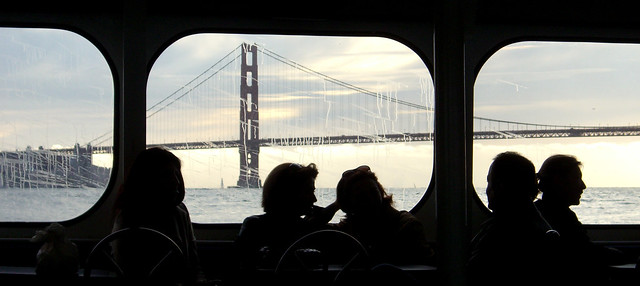 Thank you all who came out to last week's happy hour! We had a small group - a couple of planning commissioners, a couple of regular readers - and it was good fun. The next one will likely be around the end of September, so keep an eye out. In the mean time, I'm back in DC keeping an eye out for the goings-on in Marin.
Thank you all who came out to last week's happy hour! We had a small group - a couple of planning commissioners, a couple of regular readers - and it was good fun. The next one will likely be around the end of September, so keep an eye out. In the mean time, I'm back in DC keeping an eye out for the goings-on in Marin.
It's been two weeks with no links, so let's get caught up.
Marin County
- What might One Bay Area learn from other regions as it crafts its Sustainable Communities Strategy? First of all, make sure to do good outreach, and second, make sure to invest enough in transit. ABAG's outreach has thus far been horrifically bad, at least in Marin, but at least MTC is on the ball with transit investment. (SPUR)
- As it turns out, San Rafael's red light cameras at 3rd & Irving are good for safety, reducing accidents by 12% over the last fiscal year while also reducing the total number of citations. Win/win, in my book. (IJ)
- The Board of Supervisors wants San Rafael to take its due diligence regarding the proposed San Rafael Airport sports complex. While most of the neighbors are in unincorporated areas like Santa Venetia and so fall directly under the county, the airport itself is under the city. (IJ)
- Apparently, George Lucas was serious when he proposed building affordable housing at Grady Ranch. I can scarcely think of a worse place for it, though the irony is rich. (Ross Valley Reporter)
- Then again, perhaps Grady Ranch wasn't such a slam-dunk for the environment after all... (IJ)
- Are you a smoker living in an apartment or condo in unincorporated Marin? Better quit now - the Board of Supervisors is likely to ban smoking in apartments and condos, both indoor and outdoor, next week. (IJ)
- West Marin tourists, park rangers, and bobcats got a pedestrian upgrade when two bridges were installed near Sausalito - one 180-foot span that bridges a creek and wetland, and another one 60-foot span. They were built so walkers could bypass nearby traffic. (IJ)
- Sausalito's Housing Element has been rejected by HCD, which cited a lack of 20-unit-per-acre developments and zoning. The city will take a second look and consider revisions. (Marinscope)
- The 75th Anniversary of the Golden Gate Bridge, celebrated on May 27, will be a grand affair with no parking, so take transit! There's free bike parking at the Presidio, both Muni and GGT will boost their buses, there will be buses to the Larkspur Ferry (a shock!), and it will generally be a good time. Alas, Marin Transit doesn't seem to be adding service so be prepared to walk, bike, or taxi from your bus pad or transit center of choice. Oh, and I recommend getting Clipper Cards for the family - saves you money and time boarding the bus and ferry, not to mention that it makes transfers to Muni easier. (Patch, GGB75, ClipperCard, IJ)
- And...: The upcoming June 5 election? Yeah, there's an app for that. (Patch) ... This week there were five DUIs on 101 in just a day. Be careful out there, people. (News Pointer) ... Bus Rapid Transit on Van Ness is a go, and is set to open in 2016. (Chronicle) ... Dispelling rumors on bike lanes and bike safety. (Mercury News) ... The Golden Gate Bridge had its share of detractors. (SFist)
The Greater Marin
- If you missed it (I did), there's a proposal winding through Sacramento to consolidate MTC, ABAG, BAAQMD, and BCDC into a single agency called the Bay Area Regional Commission governed by 15 commissioners elected from new districts in the Bay Area. Fearing a loss of influence, Napa is fighting this one tooth and nail. (Napa Valley Register)
- Martinez may soon join the city of Napa in switching its downtown streets to two-way. Ought San Rafael follow suit? (Contra Costa Times)
- In a move that defines ambition, Chicago declared that it would have no road fatalities in 20 years. (Streetsblog)
- Sometimes we go so long without transit that we forget how to behave, or we are so used to transit we never unlearn our bad habits. SFist has a great series of articles on transit and walking etiquette that I heartily recommend to you.
- If you want a better street and live in San Francisco, check their new website for info on how to get some street improvements on your own. Marinites, well, check it out for some street envy. Perhaps one day even Novato will warm to the parklet. (Streetsblog)
- Cincinnati is giving form-based zoning a try, allowing neighborhoods to develop along the lines of how they wnat to look, rather than just based on how buildings are used. (Cincinnati.com via Planetizen)
- UPDATE: People that live where it's easy to walk from home to work or stores tend to do so, and also tend to bike significantly more than their more thinly-spread compatriots. Though the study was done in some of DC's more tony neighborhoods, I suspect you'd find the same thing in the old TOD downtowns of Marin. (Washington Post)
